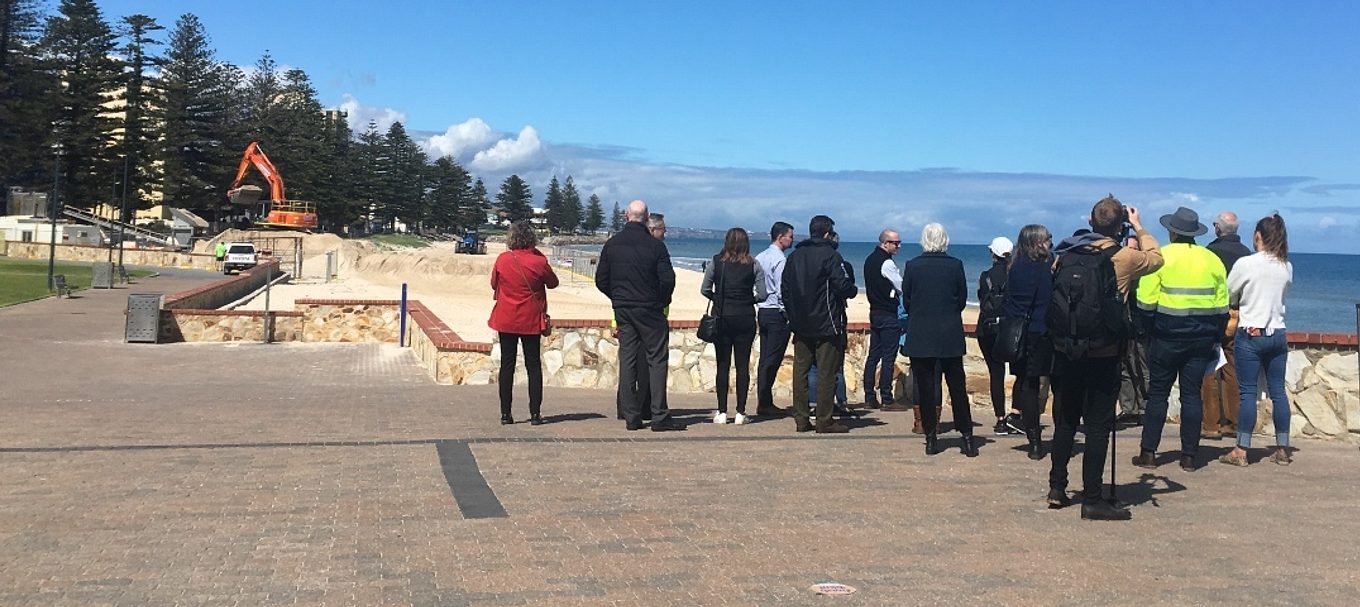
Book now to learn how Adelaide’s beloved metropolitan beaches are kept sandy
In Adelaide, we love our beaches. Taking a cooling dip in the sea, strolling barefoot along the foreshore or walking the dog in the brisk morning sea breeze – our beaches are an everyday part of many people’s lives and it just wouldn’t be the same without them.
However, our golden sand is a finite resource. It needs to be managed and shared along our coastline so we can all enjoy Adelaide’s stunning beaches now, and into the future.
Managing our beaches
Did you know Adelaide’s metropolitan beaches have been actively managed for nearly 50 years? The sand along Adelaide’s coast naturally moves northward, by the wind and waves.
To keep our beaches sandy and protect our coastline from storms, replenishment works take place on many of our metropolitan beaches on a regular basis.
Sand is collected from where it builds up and moved back to areas of erosion. Without moving sand, some of our favourite beaches would erode to rock and clay.
This approach is based on decades of research, monitoring and international best practice.
Replenishing beaches during spring provides sandy beaches for summer, while autumn sand movement is designed to provide protection from winter storms.
The Securing the Future of our Coastline project helps restore and maintain sand at eroding beaches, including West Beach and Henley Beach South.
As part of the initiative, a sand recycling pipeline will be built from Semaphore to West Beach similar to the one already successfully operating between Glenelg and Kingston Park.
This underground sand recycling pipeline from Glenelg to Kingston Park transfers sand from beaches where sand is building up, to beaches where sand is eroding.
It currently pumps approximately 100,000 cubic metres (m3) of sand – the equivalent of about 40 Olympic size swimming pools – successfully each year.
What happens during pumping?
During pumping, temporary infrastructure that collects and moves the sand into the pipeline is assembled on beaches for 2 to 3 months.
The machinery is removed when the pumping is complete, usually by November, so that beaches are ready in time for summer. Pumping does not occur over summer when our beaches are in peak use.
Keeping Adelaide’s beaches sandy - Adelaide’s sand recycling pipeline
Want to see it for yourself?
You can learn more about sand pumping at a free community tour.
Registrations to attend a community tour to see the Glenelg to Kingston Park pipeline in action are now open. Numbers are strictly limited so book now to secure a spot:
- Friday 23 October 2020, 10:00 am to 12:00 pm – starting at Glenelg Jetty
- Friday 23 October, 10:00 am to 12:00 pm – starting at Somerton Park
- Tuesday 27 October 2020, 10:00 am to 12:00 pm – starting at Glenelg Jetty
- Tuesday 27 October 2020, 10:00 am to 12:00 pm – starting at Somerton Park.
Learn more about how the South Australian Government manages Adelaide’s beaches and how we’re securing the future of our coastline by visiting theDEW website.





